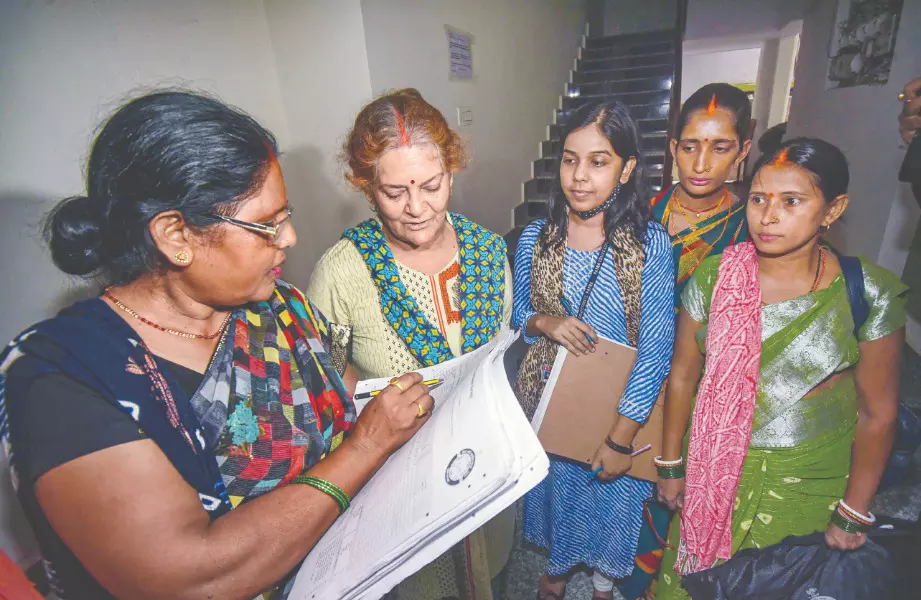SC directs EC to publish by Tue details of 65 lakh excluded voters

New Delhi: The Supreme Court on Thursday directed the Election Commission of India (ECI) to publish by August 19 the details of 65 lakh voters excluded from Bihar’s draft electoral rolls, along with reasons for their omission, as part of the ongoing Special Intensive Revision (SIR) exercise. The Court also allowed Aadhaar to be accepted as an identity document for claims and objections during the process.
A bench of Justices Surya Kant and Joymalya Bagchi said the measure was aimed at enhancing transparency and giving citizens an opportunity to seek corrections.
“Transparency will create voter confidence,” Justice Bagchi remarked during the hearing.
The revision exercise, the first of its kind in the state since 2003, has led to a reduction in the number of registered voters from 7.9 crore to 7.24 crore. The deletions have sparked a political storm, with several parties alleging attempts at disenfranchisement.
The Court ordered the ECI to ensure that the list of excluded voters is displayed at panchayat offices, block development offices, and district returning officers’ offices, with specific reasons for deletion such as death, migration, or duplicate entries. Soft copies of the list are to be made available on district electoral officer websites and social media platforms, in a searchable format by Election Photo Identity Card (EPIC) number.
Wide publicity through newspapers in both vernacular and English, television channels, and radio has also been mandated so that affected individuals know where to access the information. The ECI has been asked to submit a compliance report by August 22.
Justice Kant stressed that the publication should be “layman friendly,” enabling even those unfamiliar with official procedures to search and verify entries. “We don’t want a citizen’s right to be dependent on workers of political parties,” he said, adding that individuals must be able to check their status independently.
The directive drew strong reactions from political leaders. Congress general secretary (organisation) K C Venugopal hailed it as a “beacon of hope” and a “massive victory for democracy,” saying the Court had upheld the Constitution in a “categorical, convincing, and courageous” way. He also noted that allowing Aadhaar was a major boost, particularly for Bihar’s poor and marginalised citizens for whom it is the most widely held document.
RJD leader Tejashwi Yadav alleged that the order “exposed the BJP, its allies and their nefarious design to disenfranchise people.”
TMC MP Mahua Moitra posted on X: “Significant interim order in our SIR petition today: Supreme Court directs @ECISVEEP to publish list of 65 lakh deleted Bihar voters on website, hand it publicly & publish printed copies in BDO offices WITH reason of deletion AND in searchable format. Also Aadhaar to be accepted.”
Representing the ECI, senior advocate Rakesh Dwivedi argued that the Commission was operating in an atmosphere of hostility, with its decisions often contested by political parties. “If they win, then EVM is good. If they lose, then EVM is bad,” he told the Court.
Dwivedi said that as of now, no one had been deleted from the operative list for 2025, as the final electoral rolls would be published on September 30. “Today the exercise is of preparation of the final list and nobody has been deleted as of now,” he said.
Providing figures, he told the bench that approximately 6.5 crore people in the draft rolls did not need to submit any documents for the SIR, as they or their parents were registered in the 2003 voters’ list.
The reasons cited by the ECI for non-inclusion of previously registered voters in the draft rolls published on August 1 included death (22.34 lakh), “permanently shifted/absent” (36.28 lakh), and “already enrolled at more than one place” (7.01 lakh).
The bench said it was not seeking to curtail the ECI’s powers for an intensive survey of the rolls. “You’re exercising the power of intensive survey as a preliminary enquiry into every voter identity...These powers are prima facie traceable, so we do not wish to interdict. But, your manner of doing this has to be reasonable. It has to give certain comfort to citizens and should not strain a person to become eligible,” Justice Bagchi observed.
Justice Kant told the ECI’s counsel, “If you bring it in the public domain, the narrative disappears.”
The judges stressed the need for a system allowing people to confirm if their names or those of family members have been excluded. Dwivedi said political party workers had been engaged to help citizens file claims. However, Justice Kant reiterated that the process should not rely on party workers, who might have ideological leanings.
“If people are happy with omissions being made, that’s the end of the chapter as far as they are concerned. At least they will be satisfied, knowing the reason,” Justice Bagchi said.
The case stems from petitions filed by the Congress, RJD, and the Association for Democratic Reforms (ADR) challenging the ECI’s June 24 decision to conduct a Special Intensive Revision in Bihar. The exercise, which involves verification of every voter’s details, has been criticised by opposition parties as a means to target certain sections of the electorate.
The Supreme Court’s order aims to ensure that those whose names have been removed have the opportunity to contest the decision before the final list is published. The bench noted that since there is a “serious dispute of dead or alive,” transparency in the process is vital to maintaining public trust in the electoral system.
The ECI conducts summary revisions annually to update rolls, but intensive revisions, such as the one underway in Bihar, are done after a significant gap to ensure a thorough check of the voter database.
The bench concluded by directing that the publication of the excluded voters’ list, both online and in physical form, should be completed within the stipulated time frame, with adequate public awareness measures taken to ensure maximum outreach.



